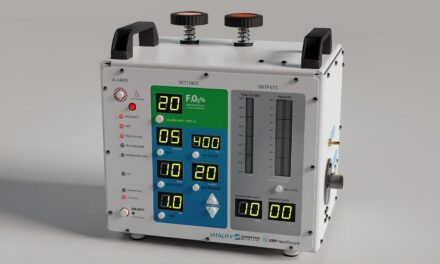Consumer electronics company Belkin is collaborating with the University of Illinois at Urbana-Champaign to design and produce the FlexVent Gas-Operated Ventilator (FlexVent), pending U.S. FDA Emergency Use Authorization. This emergency ventilator is based on the Illinois RapidVent concept, which the University of Illinois published in March 2020.
The collaboration was started in response to the ongoing demand for additional, critical respiratory care supplies worldwide during the COVID-19 crisis. As proposed to FDA, the FlexVent will be used as a single-use, emergency ventilator that can provide constant-flow, pressure-cycled ventilation automatically to patients in respiratory distress.
“This is one of the most urgent humanitarian crises we have experienced in our lifetimes and the No.1 responsibility for each of us in this moment is the care and compassion for others in need,” says Chet Pipkin, CEO and founder of Belkin. “Our merger with Foxconn Interconnect Technology (FIT) in 2018 gave us access to the most powerful and capable manufacturing assets in the world and its long-term strategy to create new end markets in automotive, industrial, and medical systems industries. We had to take action now where we could.”
He adds: “With a global pandemic underway, we quickly realigned our assets to serve the healthcare community, and we were able to adapt to identify one of the most pressing needs facing the healthcare community: ventilators.”
Belkin obtained a license to the Illinois RapidVent design from the University of Illinois. Team members from University of Illinois and Carle Health offered invaluable feedback on the product design, manufacturability, training for physicians, and potential clinical scenarios where the FlexVent may be needed to help COVID-19 patients when other FDA-cleared or approved conventional/standard full-featured ventilators are unavailable.
“In healthcare, we must do everything we can to meet our patients needs now and in the future,” says Carle Health Chief Medical Officer Charles Dennis, MD. “When we looked at what was necessary not only for our health system, but for hospitals throughout the U.S., we knew we needed to seek out innovative options. Pairing physicians and engineers made this emergency ventilator a possibility.”





